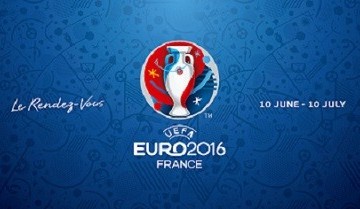What makes an Olympian?

Compare an Olympian with a well built man, and you will still surely figure who amongst the two is an Olympian.
By 31st Jul, 2012 | 06:46 pm
ShareCompare an Olympian with a well built man, and you will still surely figure who amongst the two is an Olympian. Athletes, especially of the Olympic class have an aura of greatness around them which one can't deny. No doubt that elite athletes are the final product of decades of hard work but apart from that, these athletes are blessed with a list of superior raw ingredients.
Special muscles
Ability in running, swimming, weightlifting and the other so-called "nonskill sports" comes down to raw power, strength, speed or endurance(depending on the sport), rather than training. One cannot increase the number or type of muscle fibers by training.
Non twitchy muscles
Whereas most people sport a fairly even split between fast and slow twitch muscle fibers, the former delivering explosive power, the latter, slow-burning endurance- genetic tests show elite marathon runners' fibers are 80 percent to 90 percent of the slow-twitch variety. Sprinters harbor more than their fair share of fast-twitch fibers for raw power and speed which cannot be trained.
Meanwhile in order not to waste kids' time training for events they'll never conquer, companies have sprung up offering saliva tests to determine children's ACTN3 makeup. Studies show that the body's muscle-fiber production depends on which variant of the gene ACTN3 one possesses. Two copies of the X variant of the gene produces a bounty of slow fibers and a predisposition for endurance sports, while two copies of the R variant lead to an overproduction of fast fibers and, consequently, a capacity for activities requiring strength or speed.
Apart from muscle types there's quantity. Two people following exactly the same training regime can gain strength at very different rates. In a few weeks some persons can almost double the amount of weight they can lift. That's because they simply have more muscle fibers that can respond to training stimulus.
Body types
Basketball players are almost always tall; gymnasts are generally short; weightlifters usually are stocky. In short, body type matters in most sports. But even within these general profiles, subtle differences often give Olympic gold medalists a leg up over their competitors.
For sprinters, some scientists think there's a reason why every world-record holder in the 100-meter dash for the past 50 years has been ethnically West African: black people generally have higher centers of gravity.
"Blacks tend to have longer limbs with smaller circumferences, meaning that their centers of gravity are higher compared to whites of the same height," said Adrian Bejan, a professor at Duke University who co-authored a 2010 study on ethnic differences between athletes. "Asians and whites tend to have longer torsos, so their centers of gravity are lower." Because legs do the work of running while the torso of the body is mostly just extra weight that the legs must carry, a higher leg-to-torso-length ratio gives blacks who are elite runners an advantage in a race lasting under 10 seconds.
Meanwhile, whites and Asians tend to dominate in swimming, where a longer torso helps. "Swimming actually generates a wave. The sport is the art of surfacing on that wave. When the wave is bigger - because the torso is longer - they go faster.
More pain, more gain
When it comes to sports like sailing, gymnastics and soccer, one must be naturally fit and have the right body type, but ultimately, practice makes perfect. As Girandola put it, "With soccer players in Brazil, of course they're good; you see kids playing out there morning, noon and night."
And yet, even in such sports, some athletes may be, by nature, more motivated to keep practicing after others have lost interest, and better able to ignore pain that would send others to the sidelines.
"You see some athletes pushing their pain thresholds and having the mental capacity to push themselves to their full potential. Maybe they're processing information differently," said Jon Williamson, a professor at the University of Texas Southwestern Medical Center who studies the brain's role in exercise and physical activity.
Elite athletes' brains may simply ignore pain signals from their muscles, allowing them to push through injuries and tolerate a greater buildup of lactic acid in their working muscles, he said. (Lactic acid is a muscle fuel that gets produced from the breakdown of glucose during strenuous exercise; its accumulation causes the burning sensation that makes you want to take a break.) However, no one yet knows whether a higher pain tolerance is inborn or learned.
One step ahead
Recent research shows top athletes exhibit greater activity in a region of the brain called the insular cortex, or insula, which takes part in such diverse deeds as perception, self-awareness, motor control, emotion and regulating homeostasis. "It's one of these regions that allows you to process external information and generate an internal response," Williamson said.
By anticipating their bodies' future needs, athletes' insulas generate a physical response in advance, thereby preventing a lag time. For example, "if you're running and you see a hill in front of you, some people see the hill before the body begins to respond to the hill," he said. "If you're experienced or trained, your body responds sooner, pumping blood through your muscles faster, making adjustments in advance that will make running up the hill easier."
In one study, Williamson examined athletes riding exercise bikes under hypnosis. "We told them they were about to go up a hill, and their heart rate increased even though their work load hadn't changed. When that happened, we saw activation in the insular cortex," he said. Other studies have shown athletes can even prepare their bodies to perform well despite a decrease in ambient oxygen levels if they know the drop is coming in advance.
It isn't yet clear whether insular cortex activity gets honed by training, or simply works better, in some people, by nature. "It's an interesting question," Williamson said. Either way, a lively insula might just be the ultimate ticket to the Olympics.
by Natalie Wolchover
livescience.com
with inputs by Neha Pinto
Special muscles
Ability in running, swimming, weightlifting and the other so-called "nonskill sports" comes down to raw power, strength, speed or endurance(depending on the sport), rather than training. One cannot increase the number or type of muscle fibers by training.
Non twitchy muscles
Whereas most people sport a fairly even split between fast and slow twitch muscle fibers, the former delivering explosive power, the latter, slow-burning endurance- genetic tests show elite marathon runners' fibers are 80 percent to 90 percent of the slow-twitch variety. Sprinters harbor more than their fair share of fast-twitch fibers for raw power and speed which cannot be trained.
Meanwhile in order not to waste kids' time training for events they'll never conquer, companies have sprung up offering saliva tests to determine children's ACTN3 makeup. Studies show that the body's muscle-fiber production depends on which variant of the gene ACTN3 one possesses. Two copies of the X variant of the gene produces a bounty of slow fibers and a predisposition for endurance sports, while two copies of the R variant lead to an overproduction of fast fibers and, consequently, a capacity for activities requiring strength or speed.
Apart from muscle types there's quantity. Two people following exactly the same training regime can gain strength at very different rates. In a few weeks some persons can almost double the amount of weight they can lift. That's because they simply have more muscle fibers that can respond to training stimulus.
Body types
Basketball players are almost always tall; gymnasts are generally short; weightlifters usually are stocky. In short, body type matters in most sports. But even within these general profiles, subtle differences often give Olympic gold medalists a leg up over their competitors.
For sprinters, some scientists think there's a reason why every world-record holder in the 100-meter dash for the past 50 years has been ethnically West African: black people generally have higher centers of gravity.
"Blacks tend to have longer limbs with smaller circumferences, meaning that their centers of gravity are higher compared to whites of the same height," said Adrian Bejan, a professor at Duke University who co-authored a 2010 study on ethnic differences between athletes. "Asians and whites tend to have longer torsos, so their centers of gravity are lower." Because legs do the work of running while the torso of the body is mostly just extra weight that the legs must carry, a higher leg-to-torso-length ratio gives blacks who are elite runners an advantage in a race lasting under 10 seconds.
Meanwhile, whites and Asians tend to dominate in swimming, where a longer torso helps. "Swimming actually generates a wave. The sport is the art of surfacing on that wave. When the wave is bigger - because the torso is longer - they go faster.
More pain, more gain
When it comes to sports like sailing, gymnastics and soccer, one must be naturally fit and have the right body type, but ultimately, practice makes perfect. As Girandola put it, "With soccer players in Brazil, of course they're good; you see kids playing out there morning, noon and night."
And yet, even in such sports, some athletes may be, by nature, more motivated to keep practicing after others have lost interest, and better able to ignore pain that would send others to the sidelines.
"You see some athletes pushing their pain thresholds and having the mental capacity to push themselves to their full potential. Maybe they're processing information differently," said Jon Williamson, a professor at the University of Texas Southwestern Medical Center who studies the brain's role in exercise and physical activity.
Elite athletes' brains may simply ignore pain signals from their muscles, allowing them to push through injuries and tolerate a greater buildup of lactic acid in their working muscles, he said. (Lactic acid is a muscle fuel that gets produced from the breakdown of glucose during strenuous exercise; its accumulation causes the burning sensation that makes you want to take a break.) However, no one yet knows whether a higher pain tolerance is inborn or learned.
One step ahead
Recent research shows top athletes exhibit greater activity in a region of the brain called the insular cortex, or insula, which takes part in such diverse deeds as perception, self-awareness, motor control, emotion and regulating homeostasis. "It's one of these regions that allows you to process external information and generate an internal response," Williamson said.
By anticipating their bodies' future needs, athletes' insulas generate a physical response in advance, thereby preventing a lag time. For example, "if you're running and you see a hill in front of you, some people see the hill before the body begins to respond to the hill," he said. "If you're experienced or trained, your body responds sooner, pumping blood through your muscles faster, making adjustments in advance that will make running up the hill easier."
In one study, Williamson examined athletes riding exercise bikes under hypnosis. "We told them they were about to go up a hill, and their heart rate increased even though their work load hadn't changed. When that happened, we saw activation in the insular cortex," he said. Other studies have shown athletes can even prepare their bodies to perform well despite a decrease in ambient oxygen levels if they know the drop is coming in advance.
It isn't yet clear whether insular cortex activity gets honed by training, or simply works better, in some people, by nature. "It's an interesting question," Williamson said. Either way, a lively insula might just be the ultimate ticket to the Olympics.
by Natalie Wolchover
livescience.com
with inputs by Neha Pinto
Important Resources
- Education Franchisee opportunity
- NCERT Solution
- CBSE Class 9 Mathematics
- NCERT Solutions for class 10 Science
- Sample Papers
- CBSE Class 9 Science
- NCERT Solutions for class 10 Maths
- Revision Notes
- CBSE Class 10 Hindi
- CBSE Class 10 English
- CBSE Class 10 English
- CBSE Class 10 Social Studies
- CBSE Class 10 Science
- CBSE Class 10 Mathematics
- Career In Science After 10
- Career In Commerce After 10
- Career In Humanities/Arts After 10
- NCERT Solutions for Class 10
- NCERT Solutions for Class 11
- Business Studies Class 12 CBSE project





